In today's summary:
- The conflict continues between PMC Wagner and the Russian Ministry of Defense over the supply of ammunition to the group in Bakhmut;
- Friction between Yevgeny Prigozhin and Ramzan Kadyrov;
- Yevgeny Prigozhin reported many interesting figures on losses and ammunition consumption, but not all of them look reliable;
- Z-military correspondents are arguing about the "bridgehead of the Armed Forces of Ukraine" on the left bank of the Dnieper;
- The most massive kamikaze drone raid on Kyiv since the beginning of the war and missile strikes on Ukraine;
- Details on the circumstances of the interception in the area of the Ukrainian capital of the Russian hypersonic missile "Dagger";
- Subversive activity covers an increasing part of the territory of Russia;
- At the Victory Day parade on Red Square, expectedly, few vehicles passed and only one tank – the museum T-34-85.
The situation at the front
The focus remains on the confrontation between the Wagner PMC, which continues the assault on Bakhmut, and the Russian Defense Ministry, with the participation of the head of Chechnya, Ramzan Kadyrov.
After Yevgeny Prigozhin, one of the founders and the main public representative of the PMC Wagner, threatened to leave combat positions in Bakhmut by May 10, the head of Chechnya Ramzan Kadyrov the next day reproached him for “taking rubbish out of the hut” and said that the fighters of his formations “ Akhmat are ready to take the positions of the Wagnerites in Bakhmut, and he has already sent an official request to this effect to Putin.
Then Prigozhin's press service reported that he had contacted Kadyrov's representatives regarding the transfer of positions. But it didn't end there either. Later, Yevgeny Prigozhin stated that the Russian Ministry of Defense promised to provide all the ammunition necessary to continue hostilities in Bakhmut and appointed General of the Army, Commander of the Aerospace Forces and Deputy Commander of the Joint Group of Russian Forces in Ukraine Sergey Surovikin responsible for coordinating actions with the Wagnerites.
The next day, Prigozhin again spoke about problems with ammunition and threatened that his mercenaries would leave their positions after the available stocks were exhausted. In addition, he expressed fears about the possible “come of Ukrainians to Rostov” and the fact that “the front will crumble” due to the betrayal of the Ministry of Defense. Also, Prigozhin in his speech mentioned a certain “happy grandfather” who could turn out to be a “complete asshole” and prevent Russia from winning the war.
In parallel with the accusations against the Ministry of Defense, Prigozhin also had friction with the head of Chechnya, Ramzan Kadyrov. Kadyrov recorded several videos criticizing Prigozhin's actions. Among other things, Kadyrov accused him of the fact that Wagner PMC mercenaries occupy only “convenient positions” in Bakhmut, and statements that they managed to occupy almost the entire city do not correspond to reality.
In addition, Kadyrov suggested that Wagner PMC mercenaries join Chechen formations. Prigozhin, in one of his messages , claimed that all the fighters refused the offer using obscene language.
Please note that during the course of the media conflict, no signs of preparations for the withdrawal or rotation of parts of the Russian group were recorded. There are no signs of a change in the situation in Bakhmut itself. As far as can be judged from recent videos, urban battles are still going on with the slow advance of Wagner PMCs on the western outskirts, and supply routes for the Ukrainian group are also preserved.
A video was published on the RIA Novosti Telegram channel showing the Wagner troops storming one of the buildings in the western part of Bakhmut. Also, a video is circulating on social networks with the departure of the Armed Forces of Ukraine from the first floor of an apartment building, on the second and third floors of which Russian mercenaries somehow ended up. The geolocation of the incident allows you to determine the approximate line of contact in the city.
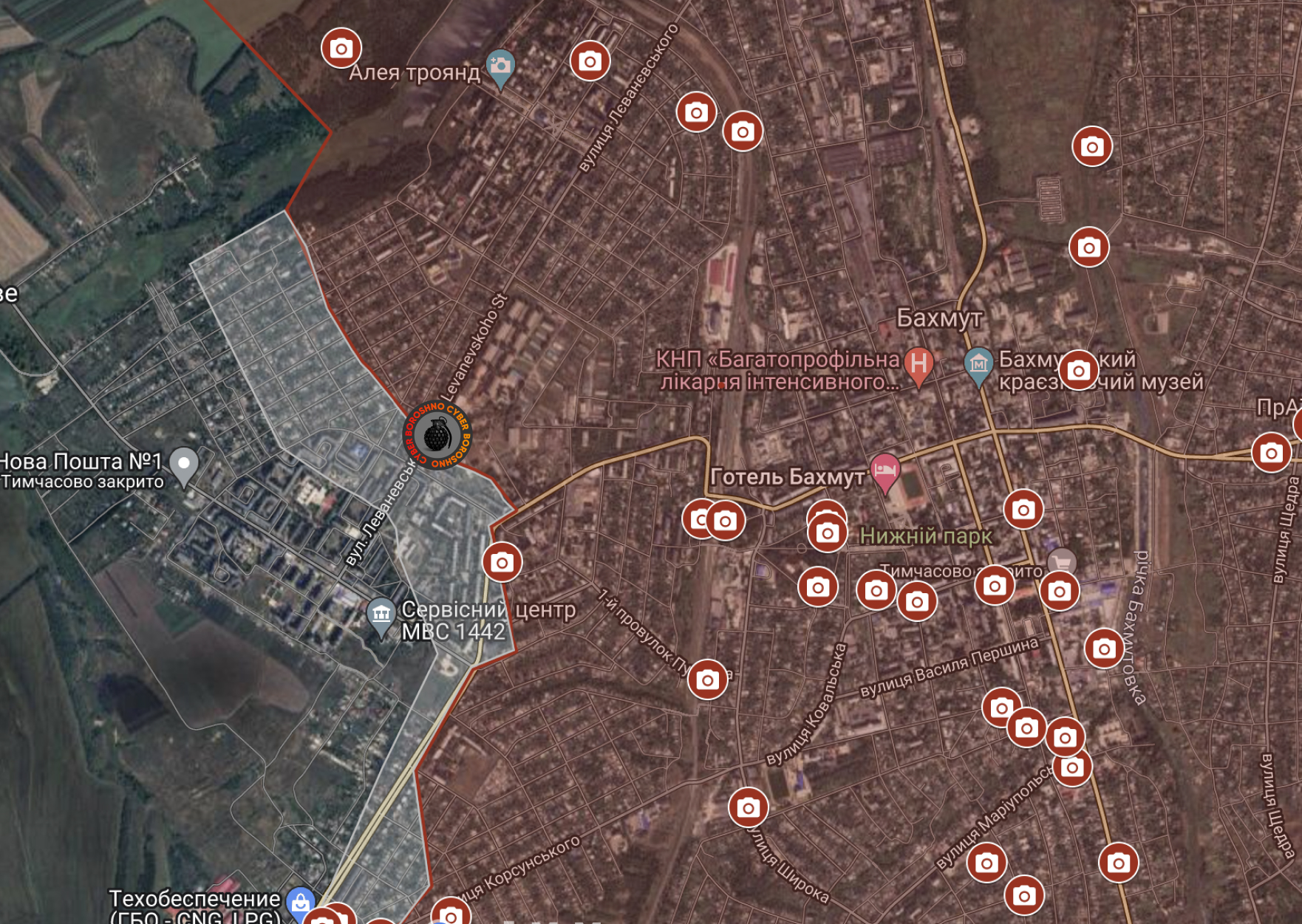
Control zones in Bakhmut according to the Telegram channel CyberBoroshno | CyberBorosno.
Finally, a fresh video has appeared from the already famous “road of life” (which Z-channels called the “road of death”) – the supply route for the Ukrainian group in Bakhmut through the village of Ivanovskoye. The recording shows noticeably abandoned and destroyed BMP-1, Dingo and Kazak-7 armored vehicles, as well as the YPR-765 armored personnel carrier and the BREM-1 recovery vehicle with the bodies of the dead. According to the author of the video, this is the result of the shelling of the road in three days.
However, the situation at least on the southern "road of life" may change for the better. On May 8, the commander of the Ukrainian aerial reconnaissance unit "Terra", which is currently supporting the 3rd separate assault brigade "Azov" near Bakhmut, reported that Ukrainian forces managed to advance a full kilometer. The next day, Yevgeny Prigozhin, in one of his videos (the transcript is available here ), said that the 72nd [separate motorized rifle] brigade of the RF Armed Forces “blew three square kilometers” by fleeing the battlefield. The telegram channel of the 3rd Assault Brigade confirmed this information, declaring more than 150 Russians killed in two days in the southwestern outskirts of Bakhmut and publishing footage of the Ukrainian offensive filmed from drones and helmet cameras. The Telegram also provides a (yet unconfirmed) map of the alleged advance of Ukrainian forces.
A panorama of Bakhmut taken from a drone shows numerous fires and severe destruction.
The well-known pro-Russian Telegram channel “Military Informant” writes that “according to reports from the field, the enemy has completed preparations for offensive operations in the Zaporozhye and Kherson directions.” The authors of the channel consider the Zaporozhye region from Orekhov towards Melitopol with the simultaneous forcing of the Dnieper by forces of special forces and marines as the main directions of the attacks of the Armed Forces of Ukraine.
The weekly (May 1-7) Ukraine Conflict Monitor by Rochan Consulting by Polish military analyst Konrad Muzyka also indicates that Ukrainian forces are likely to move into more active operations.
One of the signs of the approaching offensive of the Armed Forces of Ukraine (and preparations for it from the Russian side) can be considered the ongoing process of evacuation of the civilian population from the Russian-controlled areas of the Zaporozhye region. On May 7, the “acting governor” of its occupied part, Yevgeny Balitsky, wrote on his Telegram channel about the removal of 1,500 residents deep into the region from the front-line territories. Prior to that, he stated that the offensive of the Armed Forces of Ukraine could begin in the coming days or even hours.

Evacuation of the civilian population in the occupied part of the Zaporozhye region
OSINT analyst Pasi Paroinen published a detailed analysis of the state of the Russian defensive lines in the Zaporizhia direction – in the Kopani – Rabotino – Tokmak section. With the help of satellite images, he showed how the system of fortifications and fortified areas was organized. The Russians built an echeloned defense with a total depth of about 30 kilometers, almost to Tokmak itself (the city itself was prepared for all-round defense). Analyst Rob Lee notes that the purpose of such fortifications is not to create an impenetrable defense, but not to allow Ukrainian forces to turn a tactical breakthrough into a strategic one and give the Russians time to move reinforcements.
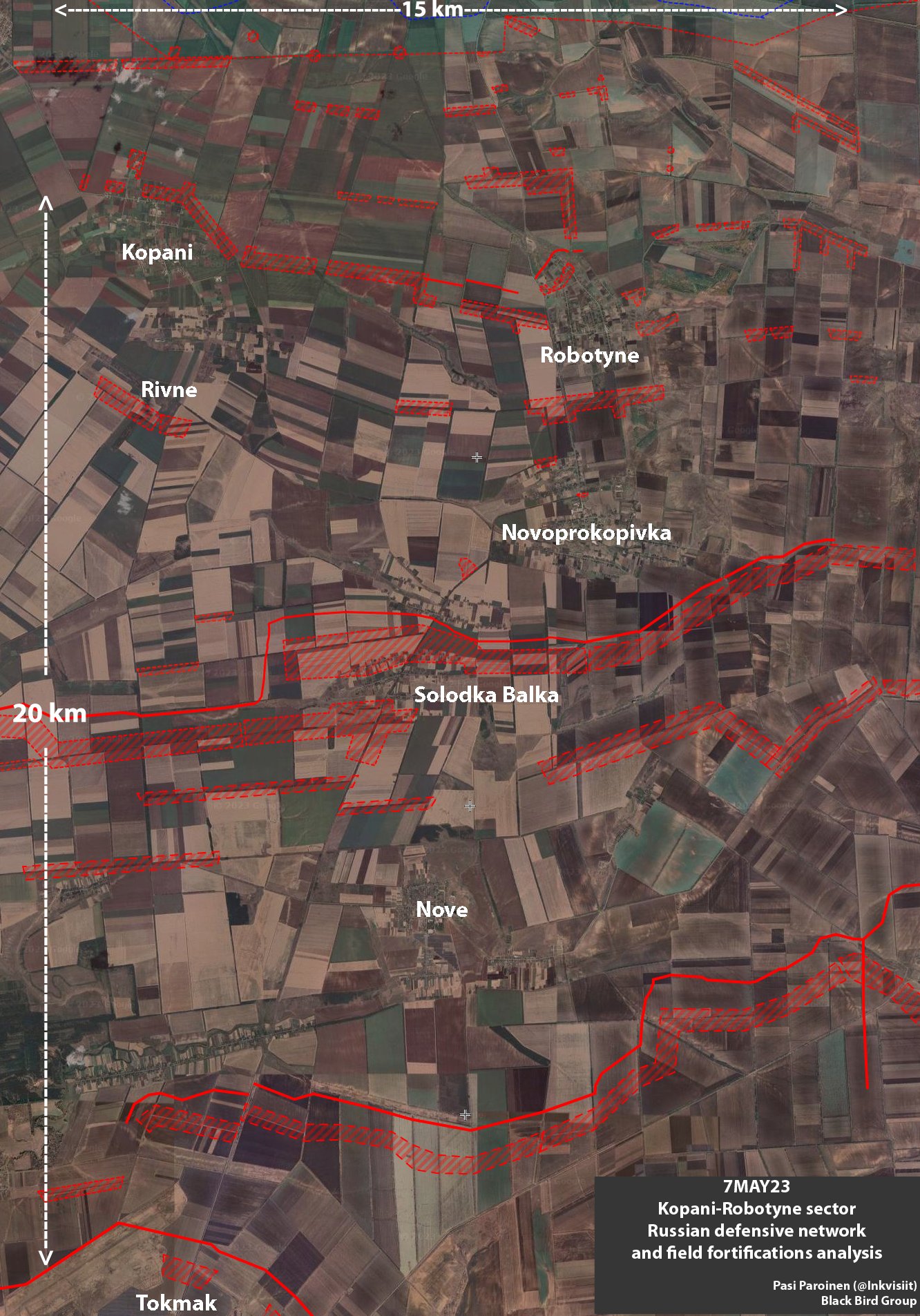
As for the Kherson direction, a conflict flares up within the Z-community over the existence of a foothold of the Armed Forces of Ukraine on the left bank of the Dnieper.
"Voyenkor" Roman Romanov published a detailed post about the activities of Ukrainian military personnel (numbering from 60 to 100 people) on the left bank. According to him, the Ukrainians conduct a constant rotation, fire from AGS automatic grenade launchers from there (and the result of the shelling is “unhappy” for the Russians), launch drones and drop grenades from them.
Another "military officer" Alexander Kots, in response, posted a video of his trip along the Dnieper from the Kinburn Spit to Oleshki, during which, according to Kots, he did not find the "bridgehead of the Armed Forces of Ukraine." True, in fact, Kots did not reach the coastline and, accordingly, the point of location of the Ukrainian forces indicated by the "commander" Romanov.
Meanwhile, more and more publications appear in the media regarding the possible results of the UAF counteroffensive, which may turn out to be more modest than many expect.
- Ukrainian Defense Minister Oleksiy Reznikov, in an interview with The Washington Post, warned against "inflated expectations" regarding the expected counteroffensive of the Armed Forces of Ukraine.
- Advisor to the head of the Office of the President of Ukraine Mykhailo Podolyak stressed that "the counteroffensive is not one battle that will decide everything."
- Czech President Petr Pavel, former chairman of the NATO military committee, in an interview with The Guardian urged not to rush the offensive, because there will not be another chance if it fails, at least this year.
- The Wall Street Journal writes that, according to some representatives of the US and EU countries, the counteroffensive of the Armed Forces of Ukraine will allow Russia to sit at the negotiating table with Ukraine, and China to be used as an intermediary.
Mutual shelling and sabotage
On the night of May 8, Kyiv experienced the most massive kamikaze drone raid since the beginning of the war. According to the city administration, 36 drones of the Geran family (they are also Iranian Shahed) participated in the raid. All drones were shot down. According to the mayor of Kiev Vitali Klitschko, the wreckage of the downed Geraniums damaged several social facilities and residential buildings in two districts of Kiev, five people were injured.
Klitschko also said that in total, the Russians fired almost 60 Geraniums on the territory of Ukraine. However, the Air Command of the Armed Forces of Ukraine reported that the Russian side had launched 35 such drones, of which 30 were destroyed over the capital, and Air Force spokesman Yuri Ignat denied Klitschko's information.
As noted in the message of the Air Command of the Armed Forces of Ukraine, kamikaze drones were launched from the Bryansk region. Earlier, Ukrainian military expert Konstantin Mashovets wrote that the specialized unit responsible for the use of the Geran UAV was relocated to the Sescha airfield in the Bryansk region. On May 3, it was reported that it was attacked by Ukrainian drones, as a result of which the An-124 Ruslan aircraft was damaged.
On the morning of May 8, the Ukrainian operational command "South" reported that the Russians fired Kh-22 missiles at the Odessa region, hitting a food warehouse and a recreational area on the Black Sea coast. As noted by the CIT team, photos of the aftermath show that the burning building is not an ammunition depot, as firefighters work close to it, without fear of secondary detonations. Later that day, the Red Cross Society of Ukraine reported that the organization's warehouse with humanitarian aid had burned down, as a result of which its issuance in the Odessa region had to be suspended.
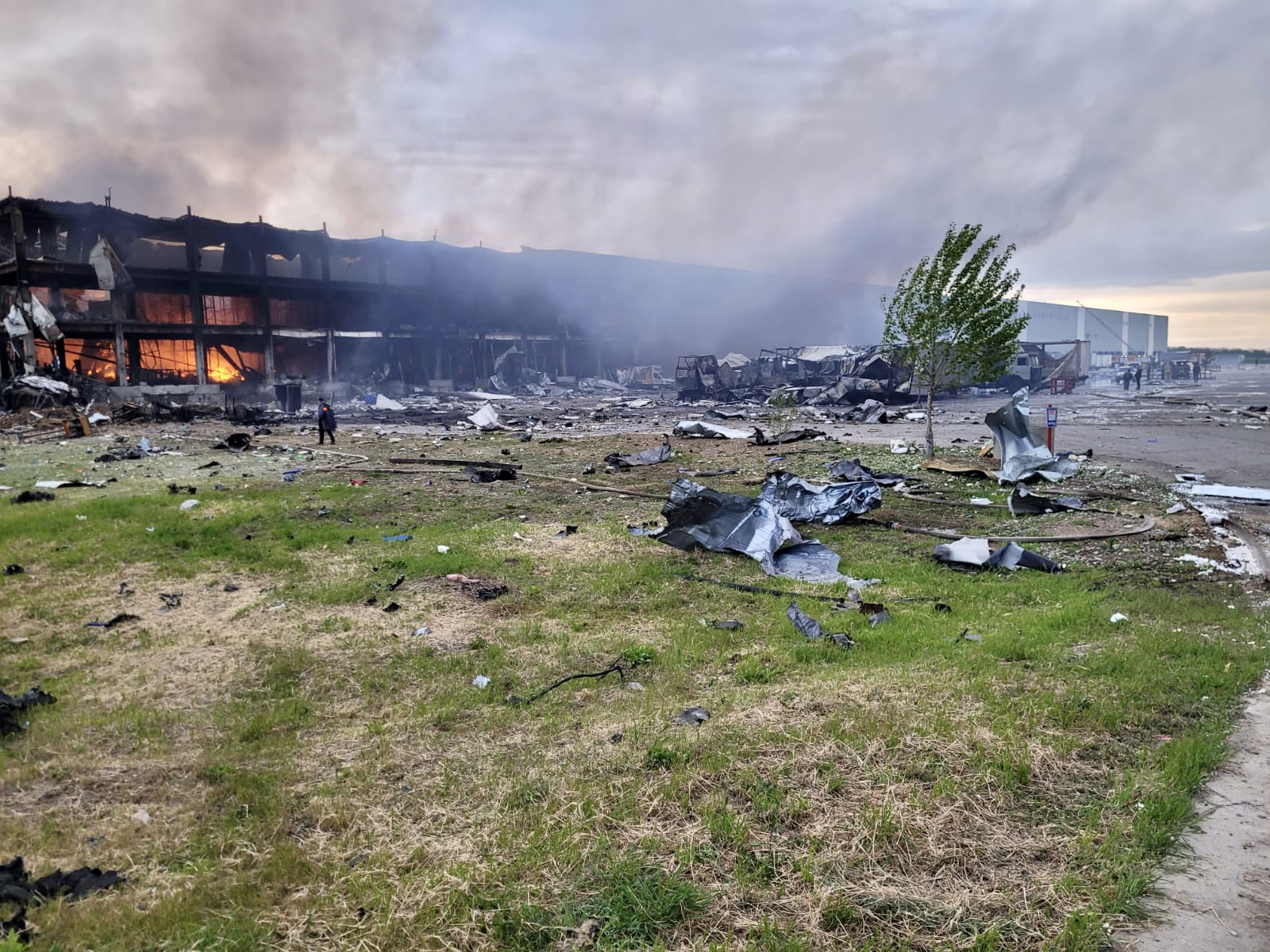
On the night of May 9, Russian troops raided the Kiev, Dnepropetrovsk, Sumy and Kharkiv regions of Ukraine with sea and air-based cruise missiles. According to the Air Command of the Armed Forces of Ukraine, out of 25 missiles launched, 23 were intercepted. Of these, 15 missiles attacked Kyiv (all shot down), 8 missiles attacked the Dnepropetrovsk region (all shot down). In addition, the Kharkiv region was fired with S-300 missiles.



As far as one can judge, the strikes by missiles and kamikaze drones still have an extremely moderate impact on the situation directly at the front and on the supply route of the Armed Forces of Ukraine. Another proof of this is a video recording of a train with a variety of equipment moving by rail during the day, including recently delivered Western models, apparently from the composition of the units that are now preparing for the Ukrainian counteroffensive.
There are new details of the circumstances of the interception in the Kyiv region of the Russian hypersonic missile "Dagger".
Recall that on May 4, journalists from the Ukrainian edition of Defense Express, based on photographs of the wreckage of a downed missile, determined that the Ukrainian air defense forces hit the "Dagger".
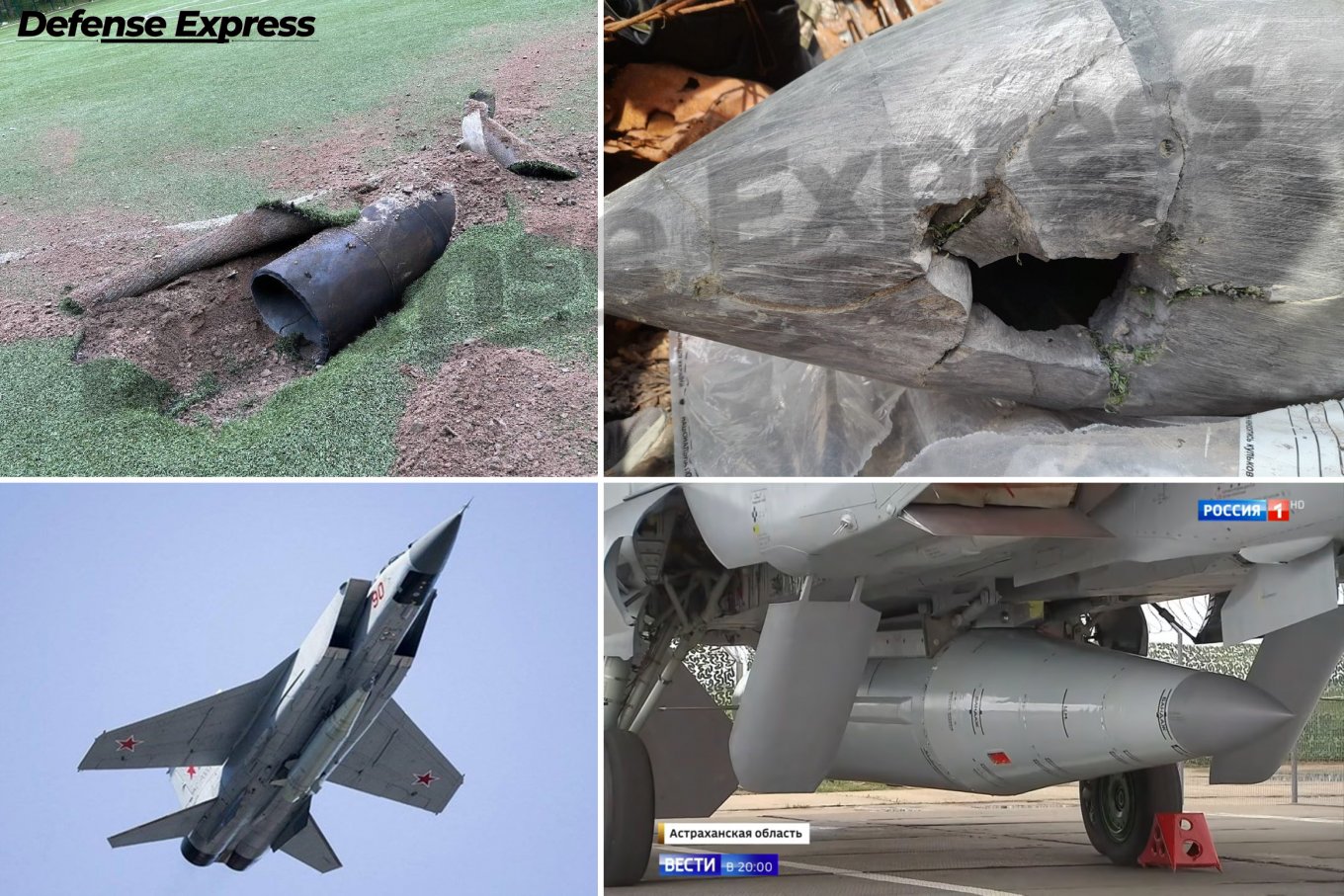
After that, Yuri Ignat denied the downing of the "Dagger", saying that launches of "ballistic missiles were not recorded." However, a day later, the commander of the Air Force, Nikolai Oleshchuk, confirmed that the air defense had indeed shot down the "Dagger".
According to a CNN publication , the Pentagon is confident that the Kinzhal was shot down from an American Patriot air defense system by a Ukrainian crew trained in the United States.
According to Ignat, the Ukrainian military was not going to report the interception of the Kinzhal:
We did not plan to immediately inform both the society and the enemy that the "Dagger" was shot down … Let them think, let them look for where their "Dagger" went. This decision was made by senior management.
The interception of the Kinzhal has far-reaching implications not only for the current conflict in Ukraine, but also for the general understanding of Russia's military potential.
The Kinzhal missile, along with the Poseidon nuclear submarine drone and the Tsirkon sea-launched hypersonic missile, is part of the “wonder weapon” category that President Vladimir Putin and other top Russian officials regularly talk about. In particular, in 2018, the President of the Russian Federation, during a message to the Federal Assembly, said that the "Dagger" is capable of "overcoming all existing and promising air defense and missile defense systems"
However, the interception clearly demonstrated that the "Dagger" is not a hypersonic missile in the modern sense. Although the missile does accelerate to hypersonic speeds in some parts of its trajectory, it is not capable of maneuvering in such conditions, which does not allow it to avoid modern air defense systems. In fact, the "Dagger" is an Iskander ballistic missile, only launched from an aircraft, which makes it a fairly standard target for Patriot systems, which were being developed to intercept ballistic missiles taking into account (by many estimates, very unsuccessful) experience in combating Iraqi Scud missiles during the Gulf War.
At the beginning of January 2023, the Minister of Defense of Ukraine Oleksiy Reznikov published an assessment of the use and availability of missiles and kamikaze drones by the Russian Armed Forces. According to these data, during the war, the Russian side used 10 Kinzhal missiles, and the Russian Federation's remaining stocks of missiles of this type amounted to 53 units.
Judging by the reports that fall into open sources, sabotage activity is deployed in a significant part of Russia.
On May 6, in the Nizhny Novgorod region, a car with Zakhar Prilepin, a writer, co-chairman of the Duma party A Just Russia – Patriots – For Truth, and an active member of separatist groups in the Donbass, was blown up by a mine. In this story, the personalities of the participants are remarkable. Prilepin's guard Alexander Shubin with the call sign "Evil" in 2020 appeared on the list of detainees in Belarus as part of a group of Wagner PMCs of mercenaries, and Alexander Permyakov, who read out to the camera a confession in organizing the bombing, turned out to be a veteran of the "LDNR militia".

Alexander Permyakov
On May 7, the FSB of the Russian Federation announced that a sabotage had been prevented at the Severny airfield in the Ivanovo region in order to disable the A-50 early warning and control aircraft. The sabotage was allegedly prepared by the Main Intelligence Directorate of the Ministry of Defense of Ukraine, and the explosive devices for sabotage were planned to be delivered from the territory of Ukraine on the Aeroprakt A-32 light aircraft.
On May 8, FSB officers detained three people who allegedly planned to sabotage a railway in the Chelyabinsk region. A day earlier, on the Supryak-Tsemzavod railway in the Chelyabinsk region, a fire broke out in the relay and battery cabinets, the incident did not affect the movement of trains.
Also on May 8, the “Legion “Freedom of Russia”” formation (many doubt that the Legion actually exists) reported that “unknown partisans” burned a Su-24 front-line bomber on the territory of an aircraft factory in Novosibirsk, attaching the corresponding video. There is no independent confirmation of the incident.
Yevgeny Prigozhin reported that the Armed Forces of Ukraine fired at the building where Ukrainian prisoners of war were allegedly kept using HIMARS systems. His press service also published a photo of the destroyed building and the patches of the Da Vinci Wolves battalion of the Armed Forces of Ukraine. However, he soon stated that he visited the scene and found that both the prisoners and "his people" were not injured. All this looks rather strange, since the second floor of the building in the photograph is almost completely destroyed, and its fragments are scattered over the area.
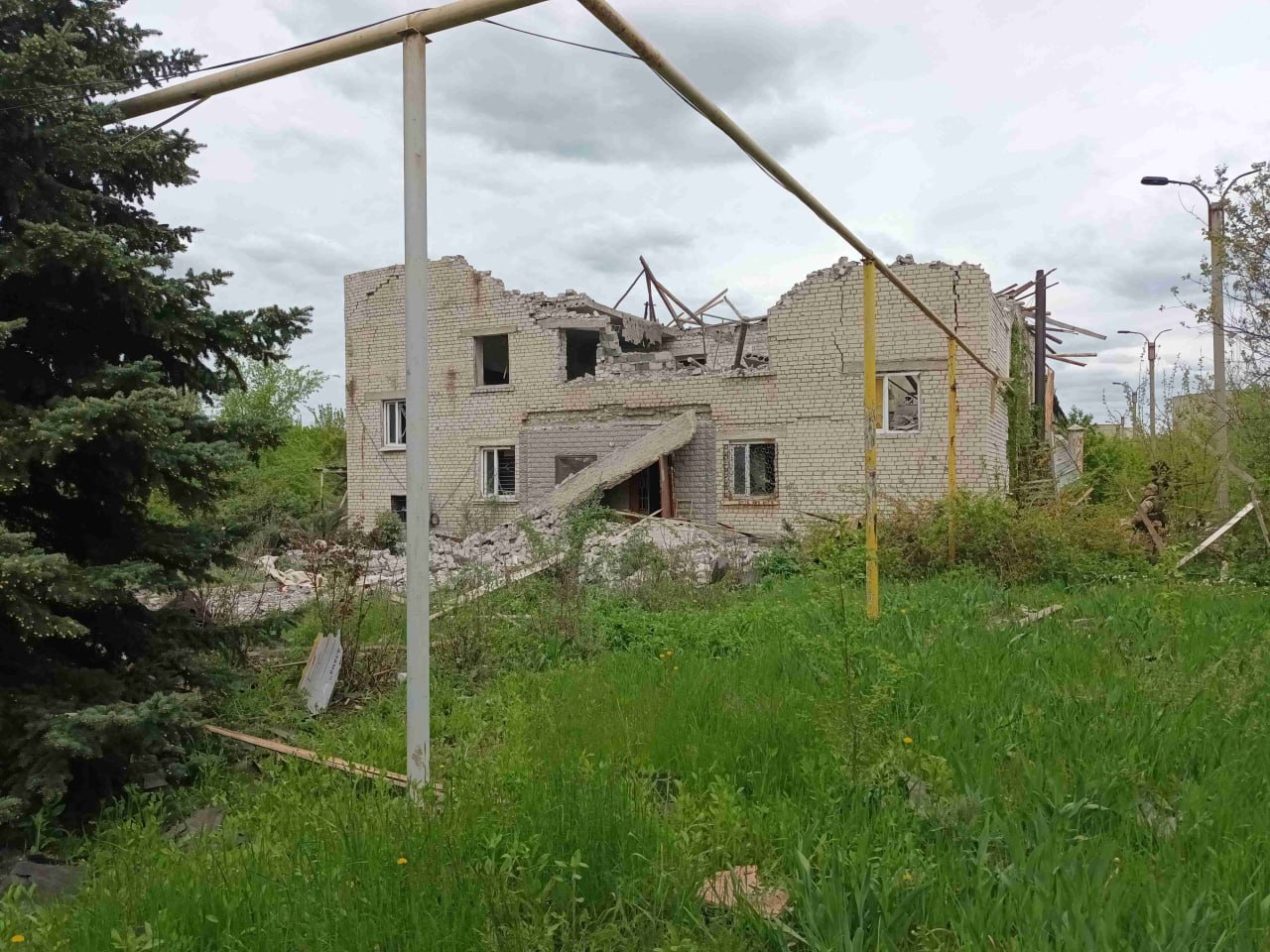
Losses
The Telegram channel Fighterbomber, associated with the Aerospace Forces of the Russian Federation, published a record from the opening in Dzhankoy of a memorial to the pilots of the 39th separate helicopter regiment who died during the so-called. "SVO". The footage included signs with the names, surnames and dates of life of 16 servicemen.
During the conflict with the Ministry of Defense, Yevgeny Prigozhin made several resonant statements at once about the losses of his own and the enemy. According to him, 400-600 servicemen are brought into Bakhmut every day by the Armed Forces of Ukraine and approximately the same number is lost per day only by the dead. If this were the case, then taking into account the wounded, captured and missing (usually there are several times more of them than those killed), the number of the Ukrainian group in the city would decrease at an incredibly fast pace.
As for his own losses, Prigozhin, firstly, claims that they are growing exponentially every day (although the loss figures he announced from April 29 to May 3 remained approximately at the same level), and secondly, that the level of losses is in direct proportion to the volume of supply of shells, and with the supply at the level of 10% of the needs, "the unit is doomed to death." As Prigozhin writes, it is precisely 10% of the Wagner PMC that receives (although, as far as one can judge, it has not yet died).
Armaments and military equipment
The footage of the preparations for the parades and the parades themselves in honor of the anniversary of the victory in the Great Patriotic War made it possible to make some interesting observations on the state of the fleet of military equipment of the RF Armed Forces. However, no far-reaching conclusions follow from this. In combat conditions, the presence or absence of certain types of weapons at parades hardly reflects the situation with weapons and military equipment in the active army.
A relatively small amount of military equipment passed in the parade on Red Square in honor of Victory Day. Of the tracked vehicles, they showed one single tank – the museum T-34-85.
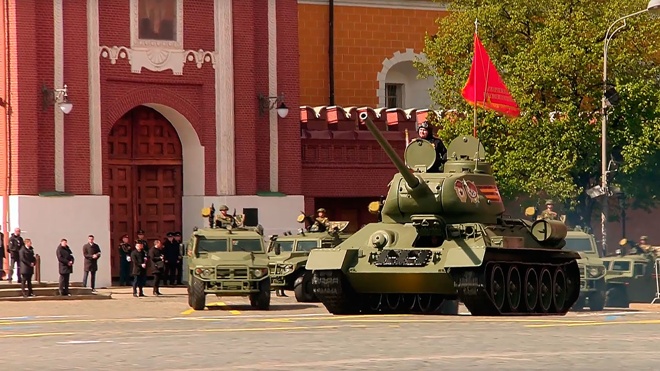
As the Military Informant Telegram channel notes , for the first time since 2007, heavy armored vehicles did not take part in the parade. The mechanized column consisted of armored vehicles "Tigr-M SpN", "VPK-Ural", Z-STS "Akhmat", wheeled infantry fighting vehicles K-17 on the platform "Boomerang" and OTRK "Iskander-M", air defense systems S-400 and PGRK " Yars".
The researcher Oliver Alexander gave some interesting calculations on the composition of mechanized columns in the last three parades in honor of May 9 on Red Square. According to him, in 2021, 197 units of equipment took part in the parade, in 2022 – 131 units, in 2023 – 51 units.
In Volgograd, at the rehearsal of the parade, T-90S tanks lit up . This is a modification of the T-90 tank, intended for foreign customers, which in 2022 began to be transferred to the combat units of the RF Armed Forces and even to the Wagner PMC.
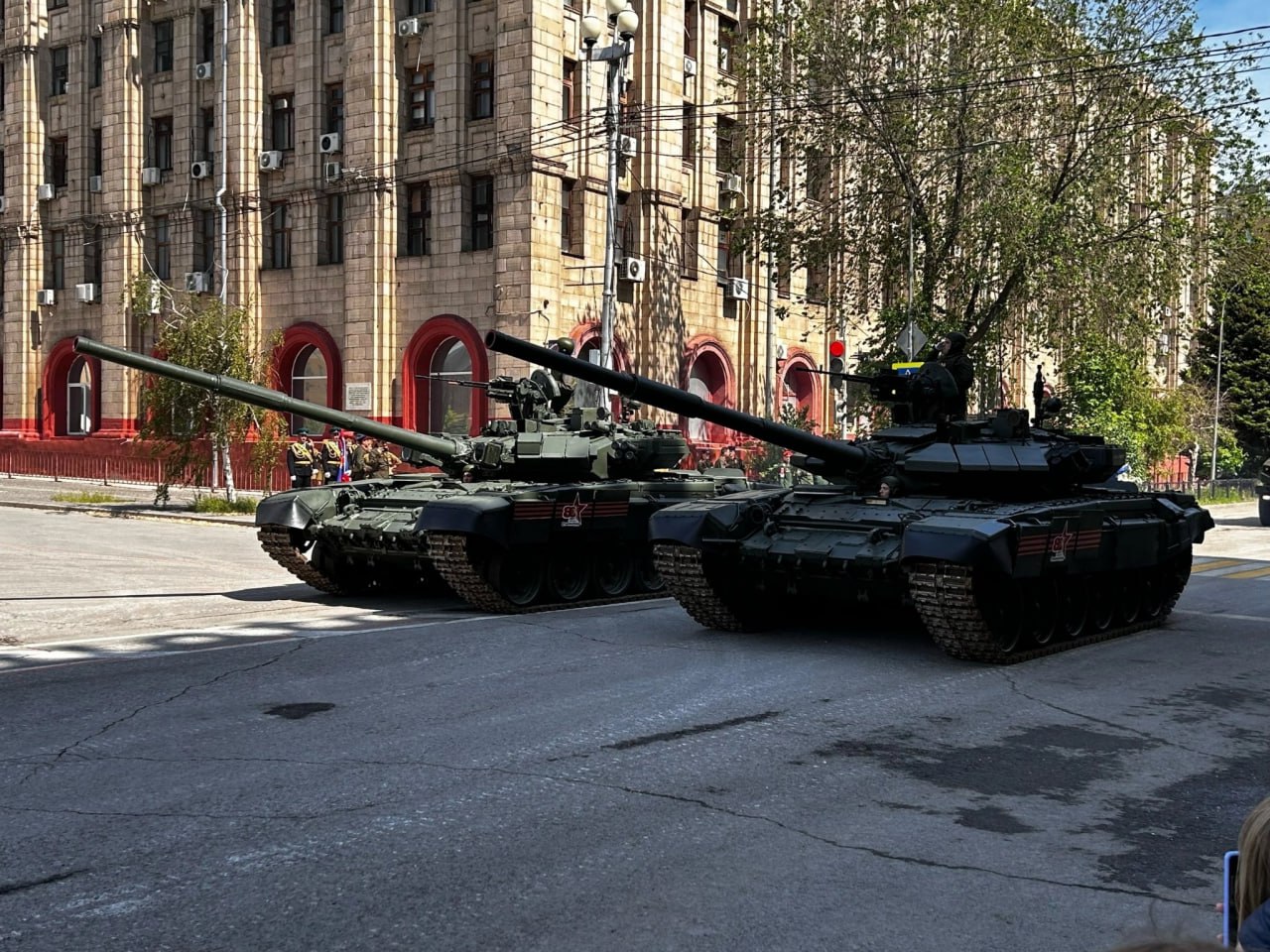
It should be noted that the Ministry of Defense of the Russian Federation for the first time mentioned in official reports the UMPC – a universal planning and correction module, a device capable of making precision-guided munitions from an unguided aerial bomb.
As far as one can judge, the "Russian analogue of JDAM" is still a "raw" development in all respects. Earlier, three air bombs, presumably equipped with UMPC, fell at once in the Belgorod region, and two of them fell on Belgorod itself. The Ministry of Defense explained the incident as an “abnormal drop” of bombs from a Su-34 aircraft.
FABs with UMPCs not only “fall uncontrollably” from fighter mounts, but also (yet) definitely cannot boast of (high) accuracy. In the Telegram channel "Warrior DV" (positioned as a source of information about the Far Eastern grouping in the combat zone), a video appeared of the use, as stated, of the FAB-500 from the UMPC at the Ukrainian point of temporary deployment in the village of Velikaya Novoselka. The footage shows the bomb hitting the road next to the building, which was apparently originally targeted.
CNN released a noteworthy article stating that Russian EW systems have greatly reduced the accuracy of Ukrainian precision-guided missile attacks. With reference to sources in the US, Ukraine and the UK, the authors also write about the declining effectiveness of GMLRS missiles due to intense jamming of GPS guidance, which was not previously observed. Missiles are still capable of hitting the target, but have recently become more and more likely to miss.
The BBC recently released an interesting story about how Ukrainian frontline units are forced to use World War I technology such as field phones to communicate because of Russian EW capabilities.
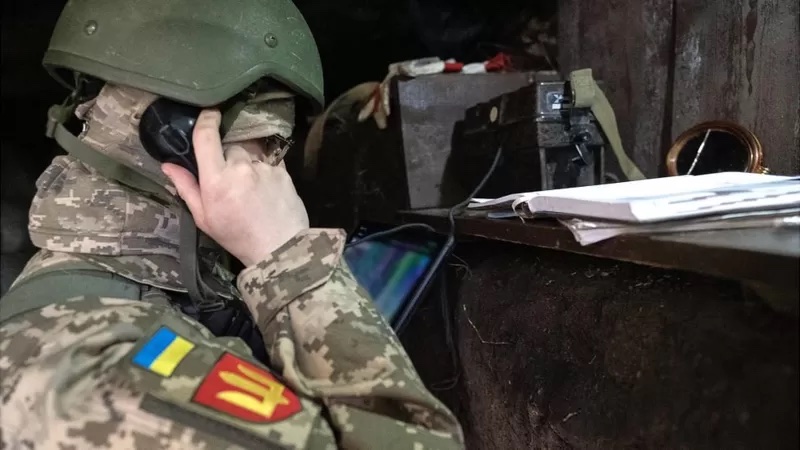
The Russian "military commander" Dmitry Steshin wrote on May 7:
… ours found a means of electronic warfare against the Hymers – they learned how to jam the GPS-based guidance system. What does it look like in real life? You go on the navigator along some Donbas glasses and suddenly the cursor on the map stops moving, and the inscription appears on the top of the screen: “Searching for satellites …” and so on for all thirty kilometers between Alchevsk and Pervomaisky, for example. Or near Volnovakha …
And already on May 9, just in Pervomaisk, the arrival of HIMARS missiles was recorded, preliminary, according to the temporary location of Russian forces.
In recent days, a lot of messages have appeared, as well as photo and video materials about the weapons, military and special equipment transferred to the Armed Forces of Ukraine.
CNN broadcast a report on how Ukrainian soldiers are trained to operate Leopard 1 tanks at a training ground in Germany. The story mentions the duration of the training program – only 6 weeks.
The blog of the AST Center close to the Ministry of Defense of the Russian Federation posted an entry with the Romanian 122-mm APR-40 multiple launch rocket systems (licensed version of the BM-21 Grad on the chassis of a DAC 665T truck). The footage was allegedly filmed in Ukraine.
The first video of the combat use in the combat zone of the 155-mm AS90 self-propelled howitzer, received by the Armed Forces of Ukraine from the UK, has appeared.
Defense resource Janes wrote that the private (but affiliated with the local Ministry of Defense) Peruvian company Diseños Casanave International in January 2023 sold reconnaissance UAVs with vertical takeoff and landing CW-40D (developed by the Chinese company JOUAV) to the Armed Forces of Ukraine.
Polish Defense Minister Mariusz Blaszczak said that 10 out of 14 promised MiG-29 fighters have been handed over to Ukraine.
According to Croatian media, nine Mi-8 helicopters flew to the territory of Ukraine. Five more helicopters (which, apparently, are in non-flying condition and can be used as donors of spare parts) will later be delivered by land. Thus, the Armed Forces of Ukraine will receive 14 Mi-8 units, which Croatia refused due to the fact that their flight life is coming to an end.
Israel Defense magazine, citing volunteer Nathan Flyer, reports that three out of 16 RADA Electronic Industries radars have already arrived in Ukraine.
The Pentagon has announced a $1.2 billion long-term military assistance package to Ukraine that will include, among other things, new air defense systems and ammunition for them, 155mm artillery shells and ammunition against drones. Like other packages provided by the Ukraine Security Assistance Initiative (USAI), these weapons are not supplied from existing stocks, but will first be produced by the US defense industry, which may take a long time.
About the main events of the war on May 5 – in the previous report: “Wagner PMC threatens to leave Bakhmut, “shell hunger” in the RF Armed Forces, Ukrainians deny the downing of the “Dagger”. What's Happening on the Frontline


